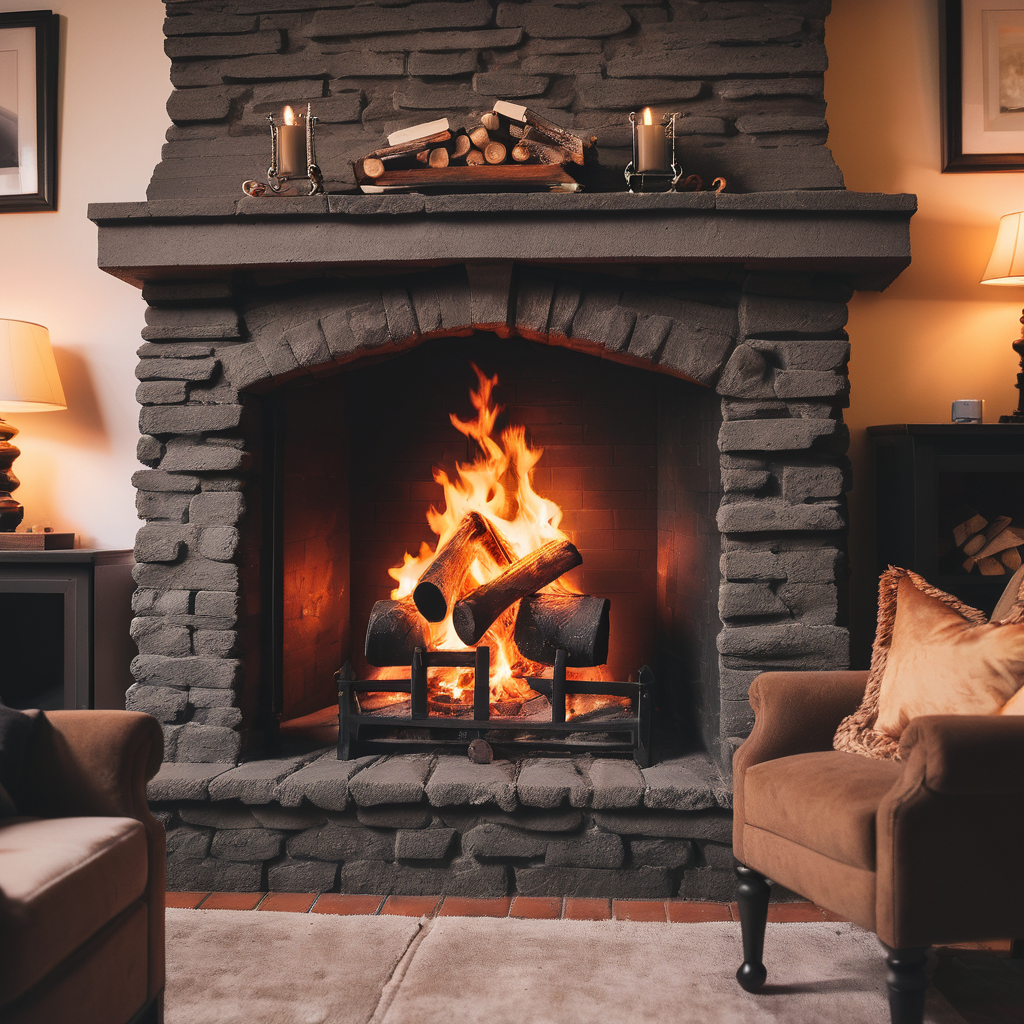
A fireplace is often the heart of a home, providing warmth, comfort, and ambiance during the colder months. However, to ensure the safety and efficiency of your fireplace, it is essential to prioritize regular maintenance, inspections, and repairs. In this comprehensive guide, we will explore fireplace safety tips, maintenance practices, and common signs that indicate your fireplace may need repairs, helping you enjoy the cozy glow of your hearth with peace of mind and confidence.
Fireplace Safety Tips:
- Annual Inspections: Schedule an annual inspection by a professional chimney sweep to check for creosote buildup, blockages, cracks, and other potential hazards that could compromise the safety and performance of your fireplace.
- Proper Ventilation: Ensure adequate ventilation in the room where the fireplace is located to prevent the buildup of carbon monoxide and other harmful gases. Keep the damper open when the fireplace is in use and install a carbon monoxide detector nearby for added safety.
- Use Quality Fuel: Only burn seasoned hardwoods or manufactured fire logs in your fireplace to reduce creosote buildup, minimize smoke emissions, and prevent chimney fires. Avoid burning treated wood, plastics, or other materials that can release toxic fumes.
- Keep Flammable Materials Away: Maintain a clear area around the fireplace, free from flammable materials such as furniture, curtains, rugs, and decorations. Keep children and pets at a safe distance to prevent accidental burns or injuries.
- Monitor Fire Extinguishing: Never leave a fire unattended and always ensure the fire is completely extinguished before leaving the room or going to bed. Use a fireplace screen or glass doors to contain sparks and embers.
Signs Your Fireplace Needs Repairs:
- Smoke Backing Up: If you notice smoke entering the room instead of exiting through the chimney, it could indicate a blockage, creosote buildup, or a damper issue that requires immediate attention.
- Cracks or Damage: Inspect the firebox, chimney, and hearth for cracks, spalling, or deterioration. Cracks in the masonry or flue liner can compromise the structural integrity of the fireplace and pose a fire hazard.
- Water Leaks: Water stains on the walls or ceiling near the fireplace indicate a leak in the chimney or flashing. Water infiltration can cause damage to the chimney, flue liner, and surrounding materials, leading to mold growth and structural issues.
- Soot Buildup: Excessive soot or creosote buildup in the chimney can increase the risk of chimney fires. If you notice a thick layer of black residue on the walls of the chimney or fireplace, it is time to schedule a cleaning and inspection.
- Unusual Odors: Strange odors, such as musty smells, smoke odors, or burning plastic scents, coming from the fireplace could indicate a ventilation problem, blockage, or improper combustion that requires professional assessment and repair.
In conclusion, maintaining a safe and functional fireplace requires diligence, awareness, and proactive care. By following fireplace safety tips, scheduling regular inspections, and being vigilant for signs that your fireplace needs repairs, you can enjoy the warmth and beauty of your fireplace while safeguarding your home and loved ones from potential hazards. Whether you need to address smoke issues, cracks, leaks, soot buildup, or unusual odors, addressing fireplace repairs promptly and professionally is essential for maintaining a safe, efficient, and enjoyable fireplace experience for years to come.
Cedar Hill St. Louis Jefferson County Olivette Kirkwood Ballwin Arnold Franklin County St Charles County Fenton High Ridge Dittmer Creve Coeur
